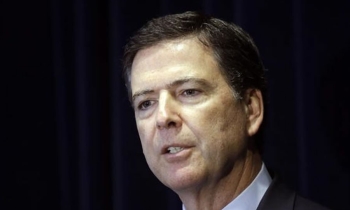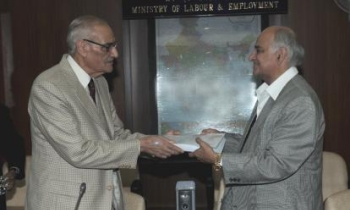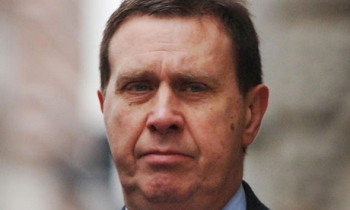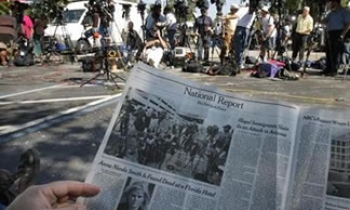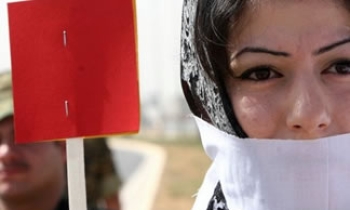No serious American newspaper would commission images of Jesus that were solely designed to offend Christians. And if one did, the reaction would be swift and certain. Politicians would take to the floors of Congress and call down thunder on the malefactors. Some Christians would react with fury and boycotts and flaming e-mails that couldn't be printed in a family newspaper; others would react with sadness, prayer and earnest letters to the editor. There would be mayhem, though it is unlikely that semiautomatic weapons would be brandished in the streets. Fortunately, it's not likely to happen, because good newspapers are governed, in their use of images, by the basic principle of news valu e .
When those now-infamous 12 cartoons of the prophet Muhammad were first published in Denmark, they had virtually no news value at all. They were created as a provocation -- Islam generally forbids the making of images of its highest prophet -- in a conservative newspaper, which wanted to make a point about freedom of speech in liberal, secular Western democracy. Depending on your point of view, it was a stick in the eye meant to provoke debate, or just a stick in the eye.
Yet, the same 12 cartoons, a tempest in a Danish teapot when they were created in September, now have immense news value. Seeing them, which has always been possible on the Internet, has become a question laden with political importance. And that change in the status of these images is because of, almost entirely, the very people who found them offensive in the first place. If there weren't people in the streets of Gaza and Amman calling for limits on press freedom in countries of which they are not citizens, these cartoons would have long since faded into the obscurity they deserve.
Because, among other things, they are disposable. Perhaps the most striking thing about them is how closely they mirror the superheated tone of the wretched cartoons one finds regularly in the newspapers of the Middle East. There are exceptions to this: The Syrian opposition cartoonist Ali Ferzat makes images of great political power, always softened by a sense of irony and sadness (and, of course, they're not available in Syria because the government shut down his newspaper). Perhaps because editorial opinion, like so many other freedoms, has been so curtailed by authoritarian governments, the cartoonists of the Middle East seize upon acceptable topics -- hatred of Israel and the United States -- with distressing frequency, unrelenting venom and vicious stereotyping.
Several of the original Danish cartoons are minted in the same style, beyond lampoon or caricature and well into the realm of pure defamation. Muhammad is seen with a huge knife and a wild thicket of a beard, flanked by two women entirely veiled but for their eyes; worse, and by far the most inflammatory, is one in which his turban holds a ticking bomb. These images confront the highest religious sensitivities of many Muslims with precisely the same style of virulent rage that Islamic countries so carefully, even ritually, cultivate against the two great boogeymen -- the United States and Israel -- of Middle Eastern politics. Americans may wonder why, given the reality of photographs from Abu Ghraib, these trifling, imaginary images of Muhammad would provoke such a reaction. In part it's because they do so in one of the few forms that are open and available for Muslim artists to express real anger.
But, of course, for many Muslims, especially fundamentalists, the nuances of how the cartoons are drawn won't matter. The essential thing is the proscription against any image of the prophet. And that is where very many people, Muslims and those who fear or hate Muslims (let's be honest about the degree of rancor on both sides), would like to leave it. People on both sides want to picture it as a fundamental conflict of values, between absolute religious beliefs and absolute political principles, between God's word (as interpreted by man) and the freedoms enshrined in Western democracy. If that's how the conflict is presented to people in the West, then they, indeed, have little choice: Of course freedom of the press, even the freedom, as one French newspaper put it, "to caricature God," cannot be compromised.
But even people who hold fast to the bedrock principles of liberal democracy may feel the exasperating hand of a darker manipulation here. Because when forced to an impasse, the cartoon battle becomes exactly what ideologues in both worlds would like it to be: a proxy for the Clash of Civilizations.
Linking the far poles of civilization has always had its perils, not least of which is the temptation to involve oneself intimately in the affairs of people far away. It's been less than 150 years since the first telegraph cable was stretched across the Atlantic, making it possible for people in New York to know that people in London were cheesed off about something utterly trifling and parochial -- and vice versa. It's been less than a century and a half since the beginnings of a world that is now instantly connected, in which a contretemps in Denmark can be quickly scaled up into a rhetorical world war. It's odd, and rather sad, how little we've learned about the way barroom brawls spiral into street riots, about the ancient emotional mechanics that still govern the most important conversations of humanity.
Religious fundamentalism forced the issue; political fundamentalism inflamed it. An apology for giving offense is now capitulation to religious tyranny; the basic instinct of moderation is equated with cowardice. A little ink on paper is inflated to proof of a basic cultural incompatibility. So political leaders here speak of "the long war," a conflict with no sign of hope on the horizon between East and West. Now, rather absurdly, these cartoons may become part of the intellectual hardening of thought that will sustain the idea, on both sides of the cultural divide.
Gravity helps those who push people to conflict; moderation is a Sisyphean task that must always work uphill. Americans can do very little, and are in fact obliged to do nothing, about Muslim societies that don't respect the Western values of tolerance and freedom. They are obliged only to sustain religious tolerance in their own. Moderation, in this case, doesn't mean compromising on the defense of basic freedoms; it means demonstrating the exuberant value of freedom in a secular society. We need more blasphemy, exactly the sort of blasphemy that most challenges our own religious sensitivities. It needn't come in the form of tasteless cartoons but in the return of voices like those of Mark Twain and H.L. Mencken, voices that puncture the pretensions and sanctity of our own religious beliefs and leaders. We may cluck about the lack of freedom in Iran, but we have grown very orthodox about the way we speak of religion in our own public square. The curious thing about sacrilege is that it very often strengthens true religion as much as it reaffirms the right to challenge it.
That is one of the few truths that we might usefully try to communicate to fundamentalists in all corners of the world. But this grew so fast, and so quickly, and without the incorporation of moderating voices on either side, that we've truly reached a frightening impasse. Listen to an Egyptian member of parliament, quoted in Egypt's Al-Ahram Weekly, get it exactly wrong: "The Danish government needs to make a more formal apology in acknowledgment that freedom of expression does not mean people are free to insult prophets."
So perhaps these cartoons really do crystallize why Islam and the West are incompatible and must hunker down for a "long war." The only other option, it seems, is to remember that if vastly different worldviews can find no accommodation on a subject, then perhaps it's too early, in human history, to have the conversation.

